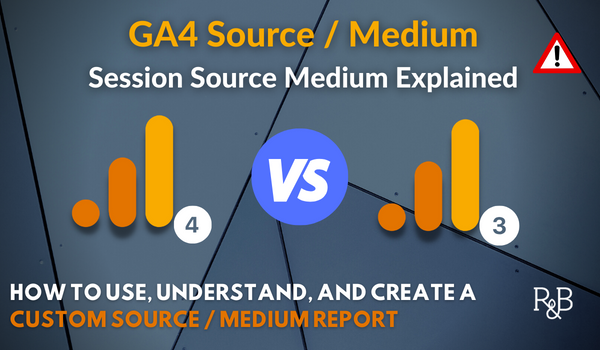The Function of Secondary Dimensions in Google Analytics: Meaning and Insights for Advanced Information Evaluation
The Function of Secondary Dimensions in Google Analytics: Meaning and Insights for Advanced Information Evaluation
Blog Article
Introducing the Impact of Second Dimension in Google Analytics on Information Evaluation and Insights
In the realm of data analytics, the usage of second dimensions within Google Analytics has emerged as a crucial device for extracting deeper understandings and unraveling facility patterns that could or else continue to be obscured. By peeling back the layers of main data collections, second measurements use a nuanced viewpoint that improves the understanding of individual habits, internet site efficiency, and the effectiveness of marketing techniques.
Discovering the Idea of Second Dimensions
Second measurements in Google Analytics provide additional understandings by enabling individuals to examine main information in conjunction with a secondary characteristic. By incorporating additional dimensions, users can dig much deeper right into the information and discover important correlations that could or else go undetected - what is a secondary dimension in google analytics.
Recognizing the principle of additional dimensions is critical for optimizing the potential of Google Analytics. It allows individuals to sector information efficiently, determine patterns, and make informed decisions based on a much more full image of their analytics information. By exploring the different additional measurements offered in Google Analytics, users can unlock new understandings and enhance their digital advertising initiatives. In significance, second measurements work as an effective device for boosting information evaluation and driving workable outcomes.
Enhancing Data Interpretation With Second Dimensions
Having actually developed the foundational understanding of secondary measurements in Google Analytics and their crucial function in information analysis, the focus currently shifts in the direction of leveraging these secondary credit to enhance the analysis of analytics information (what is a secondary dimension in google analytics). By integrating secondary measurements into information analysis, analysts can obtain deeper insights right into user actions, website efficiency, and advertising effectiveness

Furthermore, secondary measurements help in contextualizing primary data metrics by providing extra layers of info. This contextualization help in recognizing the 'why' behind the information fads, helping analysts make informed decisions and optimizations to improve overall efficiency. Inevitably, including second measurements enhances the data analysis procedure, leading to even more purposeful insights and calculated actions.
Revealing Hidden Insights Through Additional Dimensions
Discovering the depths of analytics data with secondary dimensions discloses important understandings that would otherwise remain covered. By including additional measurements in Google Analytics, organizations can uncover concealed patterns, fads, and connections that provide a more extensive understanding of individual habits and web site efficiency. These extra layers of information permit experts to dive deeper into the main measurements, such as website traffic resources or landing web pages, and obtain a much more nuanced point of view on how various variables interact with each various other.
Via making use of secondary dimensions, experts can segment and compare information throughout numerous dimensions, allowing them to identify specific elements that influence customer interaction, have a peek here conversion rates, and overall success metrics. By coupling the key measurement of 'device group' with click site the additional measurement of 'age team,' marketing professionals can pinpoint which age demographics choose accessing the internet site via mobile tools versus desktops. This level of granularity equips organizations to make data-driven decisions and optimize their approaches for far better results. Inevitably, revealing concealed understandings with second dimensions enhances the deepness and precision of information analysis, leading to more enlightened decision-making and boosted performance end results.
Leveraging Additional Dimensions for Actionable Analytics
Structure upon the insights unveiled via secondary measurements in Google Analytics, organizations can now harness this enriched information landscape to drive actionable analytics and strategic decision-making. By leveraging second measurements, organizations can delve deeper right into their data to draw out valuable patterns, patterns, and correlations that might have formerly gone unnoticed. This much deeper degree of analysis makes it possible for services to acquire an extra detailed understanding of user behavior, campaign efficiency, and total site performance.
One key benefit of utilizing additional dimensions for workable analytics is the ability to segment data based on certain criteria. This segmentation enables services to tailor their projects and strategies to different target market teams, leading to extra targeted and reliable advertising efforts - what is a secondary dimension in google analytics. Furthermore, second dimensions supply a more all natural view of individual communications, making it possible for organizations to enhance their website web content, layout, and overall user experience
Taking Full Advantage Of Decision-Making With Additional Dimensions
To boost strategic decision-making in analytics, leveraging secondary dimensions in Google Analytics can provide a more nuanced perspective on user behavior and project performance. By incorporating second dimensions right into information evaluation, organizations can dive much deeper right into the specifics of their web site site visitors' communications and involvement patterns. This additional layer of info allows for a more comprehensive understanding of just how different variables, such as demographics, gadgets, or website traffic sources, influence vital efficiency indications.

Verdict
In final thought, making use of additional dimensions in Google Analytics plays a critical role in improving information analysis and uncovering concealed insights. By exploring this idea, one can acquire a much deeper understanding of user habits and make informed choices based on workable analytics. Leveraging additional measurements allows for a more comprehensive interpretation of data and maximizes the efficiency of decision-making processes.

Report this page